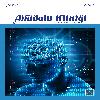Bağlanma Teorisi ve Bağlanma Bozukluklarına Genel Bir Bakış
Attachment Theory and an Overview of Attachment Disorders
___
- 1. Bowlby J. The making and breaking of affectional bonds. II. Some principles of psychotherapy. The fiftieth Maudsley lecture. Br J Psychiatry. 1977;130:421-31.
- 2. Bowlby J. Attachment. New York: Basic Books; 1969.
- 3. Bowlby J. Separation: Anxiety and Anger. New York: Basic Books; 1973.
- 4. Bowlby J. Loss: Sadness and Depression. New York: Basic Books; 1980.
- 5. Kraemer GW. A psychobiological theory of attachment. Behav Brain Sci. 1992;15(3):451-93.
- 6. Bretherton I, Munholland KA. Internal working models in attachment relationships: a construct revisited. Handbook of Attachment, ed. Cassidy J, Shaver PR. New York: Guilford; 1999:89-111.
- 7. Hazan C, Shaver PR. Romantic love conceptualized as an attachment process. J Personality Social Psychol. 1987;52(3):511-24.
- 8. Mickelson KD, Kessler RC, Shaver PR. Adult attachment in a nationally representative sample. J Pers Soc Psychology. 1997;73(5):1092-106.
- 9. West ML, Sheldon-Kellor AE. Patterns of Relating: An Adult Attachment Perspective. New York: Guilford Press; 1994.
- 10. Klohnen EC, John OP. Working models of attachment: a theory-based prototype approach. Attachment Theory and Close Relationships, ed. Simpson JA, Rholes WS. New York: Guilford; 1998:115-40.
- 11. Özer Ü, Yıldırım EA, Erkoç ŞN. Major depresyon olgularında intihar düşünce ve davranışının bağlanma biçimi ile ilişkisi. Arch Neurosciatr. 2015;52(3):283-8.
- 12. Bartolomew K, Horowitz LM. Attachment styles among young adults: a test for four-category model. J Pers Soc Psychol. 1991;61(2):226-44.
- 13. Wilhelm K, Tietze T. Difficult doctor-patient interactions: applying principles of attachment-based care. Medicine Today. 2016;17(1-2):36-44 . 14. Main M. Metacognitive knowledge, metacognitive monitoring, and singular (coherent) vs. multiple (incoherent) model of attachment: findings, and directions for future research. Attachment Across the Life Cycle, ed. Parkes CM, Stevenson-Hinde J, Marris P. Londra: Routledge; 1991:127-60.
- 15. Fonagy P, Steele H, Moran GS, Higgett AC. The capacity for understanding mental states: the reflective self in parent and child and its significance for security of attachment. Infant Ment Health J. 1991;12(3):201-18.
- 16. Lyons-Ruth K, Block D. The disturbed caregiving system: relations amongst childhood trauma, maternal caregiving, and infant affect, and attachment. Infant Mental Health J. 1996;17:257-75.
- 17. Adshead G. Psychiatric staff as attachment figures. Br J Psychiatry. 1998;172:64-9.
- 18. Blackwell B. Sick-role susceptibility. Psychother Psychosom. 1992;58:79-90.
- 19. Groves JE. Taking care of the hateful patient. N Engl J Med. 1978;298(16):883-7.
- 20. Lipowski ZJ, Somatization: the concept, and its clinical application. Am J Psychiatry. 1988;145(11):1358-68.
- 21. Dozier M. Attachment organization, and treatment use for adults with serious psychopathological disorders. Dev and Psychopathol. 1990;2(1):47-60.
- 22. Ciechanowski P, Katon W, Hirsch I. Attachment style and adherence in the diabetic patient. Psychosom Med. 1999;61(1):110.
- 23. Yılmaz Özpolat AG, Ayaz T, Konağ Ö, Özkan A. Attachment style and perceived social support as predictors of biopsychosocial adjustment to cancer. Turk J Med Sci. 2014;44(1):24-30.
- 24. Maunder RG, Hunter JJ. Attachment and psychosomatic medicine: developmental contributions to stress and disease. Psychosom Med. 2001;63(4):556-67.
- ISSN: 2149-5254
- Yayın Aralığı: Yılda 3 Sayı
- Başlangıç: 1933
- Yayıncı: Hayat Sağlık ve Sosyal Hizmetler Vakfı
Geleneksel ve Tamamlayıcı Tıp Uygulamaları Yönetmeliği'nin Hukuki ve Etik Açıdan Değerlendirilmesi
Pervin SOMER, E Elif VATANOĞLU LUTZ
Üst Kolda Radyobazilik Transpozisyon
Mehmet Ali SUNGUR, Okay Guven KARACA, Ayşegül KOÇ
Posteriyor Reverzibl Ensefalopati Sendromunda Hayat Kurtarıcı: Yoğun Bakım Ünitesi
Ziya SALİHOĞLU, Muhittin ÇALIM, İbrahim Hakkı ÖLÇÜLÜ, Hayrettin DAŞKAYA, Ferda YILMAZ İNAL, Kadir İDİN
Erkek Bir Ergende Metilfenidat ile İndüklenen Hiperhidrozis
Murat COSKUN, Ilyas KAYA, Ibrahim ADAK
Lise Öğrencileri Arasında Sigara ve Alkol Kullanma Sıklığı ve Etkileyen Faktörler
Handan ANKARALI, Dilek KONUK-ŞENER, Aysel KARACA, Dilek AKKUŞ
Reflü Cerrahisi Sonrası Görülen Basınçlı Hidropnömotoraks
Hüseyin YILDIRAN, Güven Sadi SUNAM, Murat ÖNCEL, Kübra ALTINTAŞ
Tek Değişkenli Modellerde Uygun Test İstatistiğinin Seçilmesi İçin Web Tabanlı Bir Kılavuz
Handan ANKARALI, Mehmet Ali SUNGUR, Şengül CANGÜR
Bağlanma Teorisi ve Bağlanma Bozukluklarına Genel Bir Bakış
Nefise Tanrıdan OKCU, Bilge Çetinkaya DEMİR, Ayşe Topçu AKDUMAN
Perioperatif Antimikrobiyal Profilaksi Uygulamalarında Rehberlere Uyum: Çok Merkezli Bir Çalışma
Mesut YILMAZ, Bülent DURDU, Oğuz KARABAY, Alper ŞENER, Aziz ÖĞÜTLÜ, Aynur ENGİN, Derya ÖZTÜRK ENGİN, Aslıhan DEMİREL, Serap GENCER, Bahri TEKER, Hava YILMAZ, Aygül Doğan ÇELİK, İlker İnanç BALKAN, Fatma EKŞİ POLAT, Serpil ÖZTÜRK ÖZKAN, İlknur ESEN YILDIZ, Muhammed Emin DOĞAN, Funda KOÇAK
